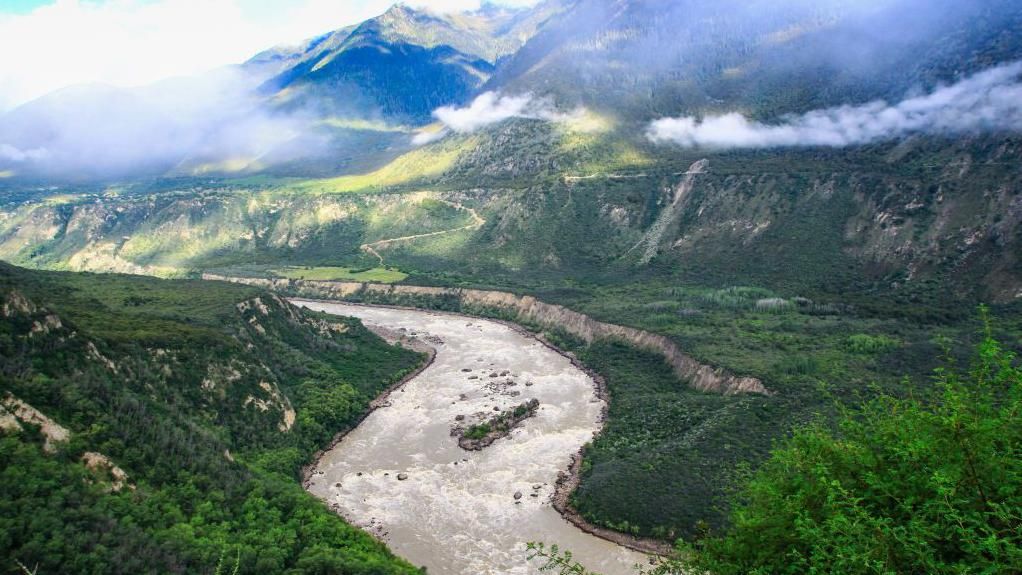China Begins Construction of World’s Largest Hydropower Dam on Tibetan Plateau

China has broken ground on what is set to become the world’s largest hydropower project, a massive cascade dam system located along the Yarlung Zangbo River on the eastern edge of the Tibetan Plateau. The development, with a projected price tag exceeding $170 bn, marks the country’s most ambitious hydropower venture since the completion of the Three Gorges Dam, Reuters reports.
According to state media outlet Xinhua, Premier Li Qiang described the undertaking as a «project of the century», pledging that ecological protection would be a central focus during its development.
Designed to Power a Nation, Stirring Global Concerns
The dam, comprising five cascading power stations, is expected to generate around 300 bn kWh of electricity annually — equivalent to the United Kingdom’s total power consumption in the past year. The project taps into the steep drop of 2,000 metres across a 50-kilometre section of the Yarlung Zangbo, offering unparalleled hydropower potential.
Beijing argues that the project will help meet growing electricity demand in Tibet and mainland China, while maintaining minimal impact on downstream ecosystems. However, environmental organisations and regional neighbours have voiced strong concerns.
India and Bangladesh have both expressed alarm over the potential impact on water flow downstream, with the Yarlung Zangbo becoming the Brahmaputra River as it passes through their territories. NGOs also warn that the construction could cause irreversible damage to one of the most ecologically rich and fragile regions in Asia.
Markets React as China Signals Major Infrastructure Investment
The announcement triggered a sharp reaction in Chinese financial markets. Investors interpreted the project as a clear sign of renewed economic stimulus through infrastructure. China’s Construction & Engineering Index climbed to a seven-month high, while shares in companies linked to tunnelling equipment, cement and explosives surged to their daily trading limits.
Among the biggest gainers were Power Construction Corporation of China and Arcplus Group PLC, both rising by the maximum 10%. Tunnel equipment maker Hunan Wuxin surged 30%, alongside monitoring technology firm Geokang Technologies. Cement producer Xizang Tianlu and explosives supplier Tibet GaoZheng also jumped the daily limit.
Analysts say the project will significantly boost demand for construction materials. Huatai Securities noted in a client memo that cement and civil explosives will see marked increases in consumption.
Bond markets responded as well, with yields rising and 30-year treasury futures falling to a five-week low, further reflecting investor expectations of expansive government spending.
Strategic Investment with Uncertain Human Cost
The project is being led by the newly established, state-owned China Yajiang Group. Though no job creation figures have been released, analysts at Citi estimate the scheme could contribute up to 120 bn yuan ($16.7 bn) annually to GDP over a decade of construction. The broader economic benefits could be even more significant.
For comparison, the Three Gorges Dam, which took nearly 20 years to build, generated close to a million jobs but also displaced a similar number of people. As of now, Chinese authorities have not disclosed how many residents might be affected or relocated due to the Yarlung Zangbo project.
Environmental groups remain deeply sceptical, warning that altering the flow of the river at such a scale could have dramatic consequences for biodiversity, agriculture and communities across the entire basin, from Tibet to Bangladesh.
Construction is expected to continue through the 2030s, and while the project promises to generate vast amounts of clean energy, its broader impact, both human and ecological, remains the subject of global debate.
Kursiv also reports that China has launched the installation of a record-setting impulse turbine at the Datang Zala Hydropower Station in the Tibet autonomous region.

